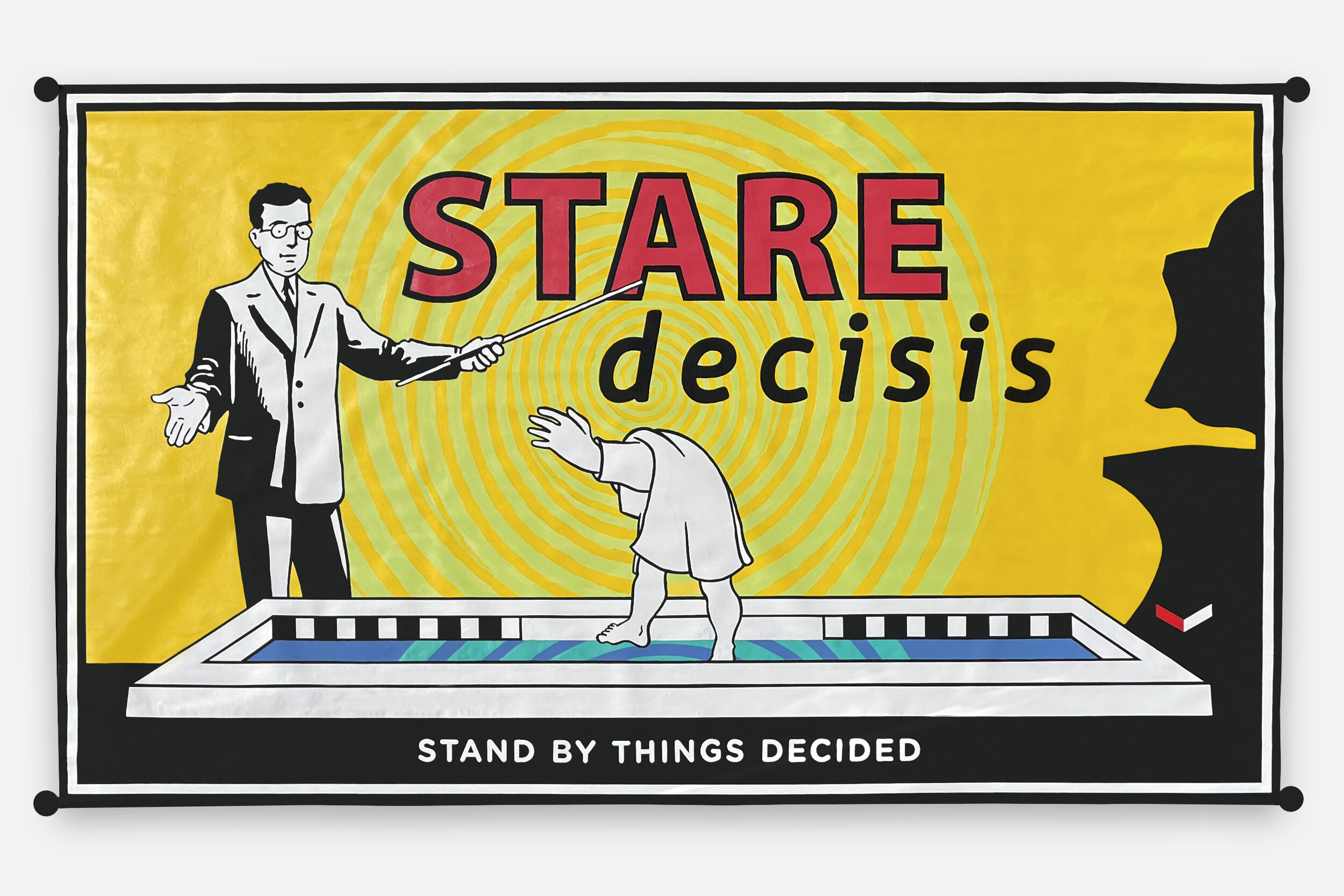Lincoln’s Campaign Broadsheet, 2023, Woodcut on paper. Sheet: 52 x 39 1/8 in.
Lincoln’s Campaign to Defeat the Hudson River School
Of interest to me is the junction of fiction and historical revisionism. My work explores how re-illustration can reveal (or distort) past and present dystopias. The woodcut portfolio “Lincoln’s Campaign to Defeat the Hudson River School” is a 5-year project that revisits 19th-century storytelling and printing techniques. The subject matter is a surreal assembly of fixed images. The narrative is revealed with short captions, including one of Lincoln’s most repeated campaign quotes. Lincoln’s bodyless face pursues two unattainable goals: to defeat the unseen Hudson River School and relocate a mysterious monument to a meaningful site by land and sea. This Homeric episode may illustrate determination in the face of severe weather or something existential, such as the transmutation of legacy. The back-and-forth paradox allows the viewer to daydream and linger.
Lincoln’s Campaign: Monument Shipment, 2023. Woodcut on paper. Sheet: 52 x 39 1/8 in.
What inspirations influenced this project?
The “Lincoln’s Campaign” project is an interpolated, dreamlike expression based on two study bullets:
• Lincoln’s legacy is based on his noteworthy achievements. His death left a void in American leadership.
• Hudson River School motifs reflect three themes of America in the 1800s: discovery, exploration, and settlement.
A few books about expeditions have made a lasting impression. Chaucer’s Canterbury Tales, illustrated by Rockwell Kent, and Samuel Taylor Coleridge’s The Rime of the Ancient Mariner, illustrated by Gustave Doré. The Rings of Saturn by WG Sebald embraced history through a meandering journey. As a teenager, I read every book by Richard Brautigan, whose prose led me to believe anything written on paper could be worthy of reflection. These publications are masterful expressions of storytelling and illustration.
Lincoln’s Pursuit: Blown Off Course, 2023. Woodcut on paper. Sheet: 51 3/4 x 39 in.
What are the methods and techniques in this body of work?
I start a woodblock print by composing the illustration digitally. An inexpensive blueprint is made for review and manual manipulation. The blueprint is then transferred in reverse to cherry veneer plywood. Black areas are drawn with a Sharpie marker. A thin red transparent glaze is applied to the block. Japanese carving gouges are used to remove the red areas to reveal white areas. Wire brushes may be used to create gray tones. After simplifying shapes, a reversed wax rubbing on paper is made. The Civil War era letterforms for the captions were cut by laser machine and re-glued onto a base woodblock.
Monument Rises Above Thomas Cole Mountain, 2023. Woodcut on paper. Sheet: 40 1/2 x 52 7/8 in.
Production notes
Lyell Castonguay of BIG INK, LLC inked and printed the combined blocks in April and June 2023. This short video on Instagram shows the inking and printing of the above print. The Digital Fabrication Lab in the Art Department of SUNY New Paltz assisted in laser cutting outlines and typographic characters for Lincoln’s Campaign Broadsheet and caption blocks.
Monument Relocated to Lincoln, New Hampshire, 2023. Woodcut on paper. Sheet: 40 1/4 x 50 3/4 in.
…I Am Bound to Live by the Light I Have, 2023. Woodcut on paper. Sheet: 28 5/8 x 84 7/8 in.
For more information about availability and pricing use the website contact form.







